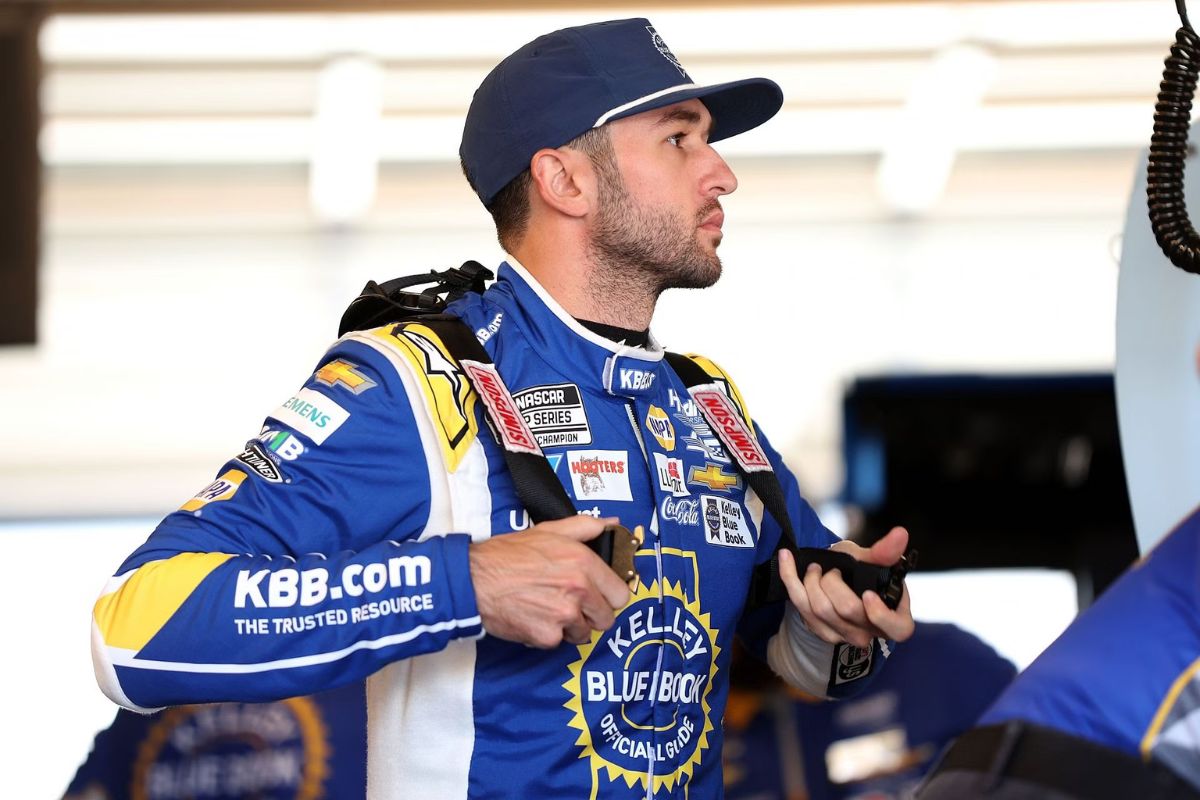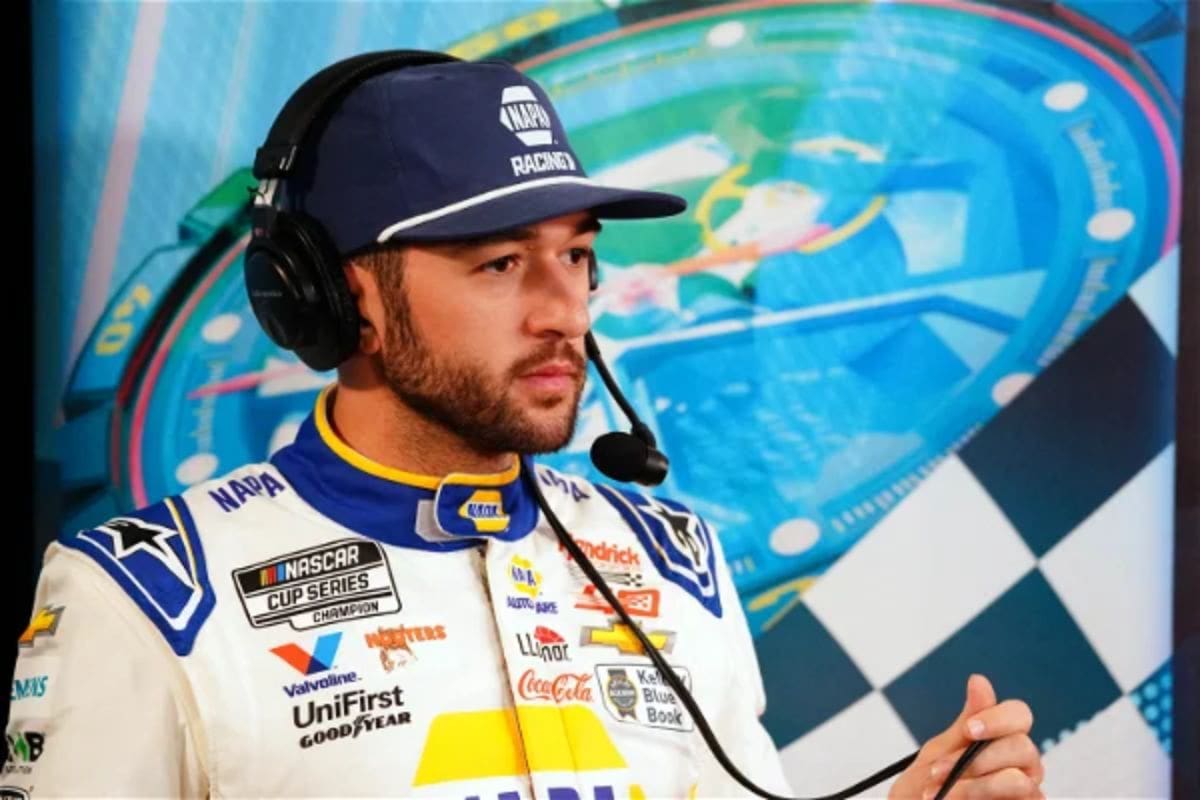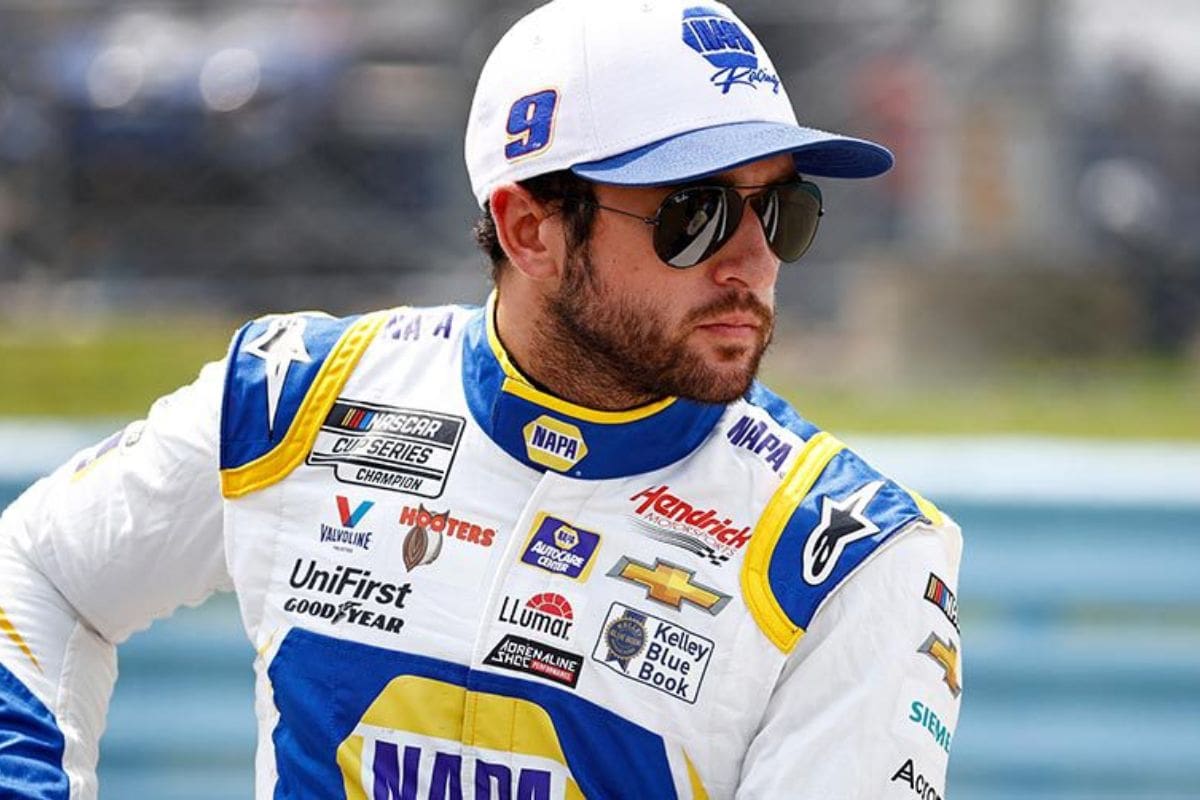Pre-Race Coverage of Chase Elliott: The world of NASCAR is no stranger to change and innovation, yet few developments have generated as much buzz as the introduction of a new tournament bracket and the revival of the historic North Wilkesboro Speedway. Chase Elliott has been at the forefront of discussing these changes. Elliott’s cautious optimism about the 2025 tournament bracket, which kicks off at the storied Atlanta Speedway, reflects a blend of curiosity and strategic foresight. Meanwhile, his reflections on the revival of North Wilkesboro Speedway highlight the financial investments and strategic efforts.
Tournament Bracket for 2025
Chase Elliott’s remarks about the upcoming NASCAR tournament bracket reveal a mix of cautious optimism and strategic foresight. His acknowledgment of the new format, starting at Atlanta, underscores the significance of this Speedway in the NASCAR calendar. Atlanta’s transformation into a “Speedway thing” hints at a broader strategic move by NASCAR to invigorate interest and competitive dynamics within the sport. It suggest the tournament bracket could introduce a fresh layer of complexity and engagement for both drivers and fans.
“I don’t know probably every single detail about it, but I have heard of it and, um, yeah, sounds interesting, especially starting at Atlanta. Um, you know, now being a Speedway thing, but yeah, I think it has potential to, you know, add some excitement to, you know, our year and, um, you know, doing something a little different. So, um, I don’t have any issues with that.”-chase
Critically, Elliott’s lack of detailed knowledge about the bracket specifics might reflect a broader sentiment within the driving community: curiosity tempered by uncertainty. His reference to the potential for added excitement indicates a positive outlook on NASCAR’s efforts to innovate. However, this excitement is coupled with an implicit understanding that changes of this magnitude carry inherent risks. The challenge for NASCAR will be to ensure that these changes enhance the racing experience without alienating traditionalists who value the sport’s established formats and rhythms.
Furthermore, Elliott’s mention of starting the tournament in Atlanta raises questions about the strategic selection of venues and its impact on the season’s narrative. Atlanta, with its rich racing heritage and revamped track characteristics, serves as a fitting launchpad for a new competitive structure. This choice may be designed to capitalize on the track’s reputation for thrilling races and its ability to handle the logistical demands of a high-profile event.
Playoff Spot for Tournament Winner
Chase Elliott’s response to the question of whether the tournament winner should be granted a playoff spot is notably non-committal, reflecting the complexity and potential controversy of such a decision. By not providing a definitive answer, Elliott implicitly acknowledges the multifaceted implications of awarding a playoff spot based on a single tournament victory. This suggests a recognition of the need for thorough consideration of how such a change would align with NASCAR’s competitive framework and its impact on the integrity of the championship.
Critically, the idea of granting a playoff spot to the tournament winner introduces a new dynamic into the NASCAR playoff structure. On one hand, it could serve as a significant incentive for drivers to perform well in the tournament, thereby increasing the stakes and competitive intensity of these events. This could potentially boost fan engagement and viewership, as each race within the tournament gains heightened importance. Elliott’s lack of a definitive stance might reflect an understanding of these potential benefits, indicating his openness to new ideas that could invigorate the sport.
However, Elliott’s reluctance to commit also highlights the potential drawbacks of this proposal. Awarding a playoff spot based on tournament performance could undermine the traditional meritocratic system where consistent performance over the season is rewarded. This shift could lead to scenarios where a driver who performs exceptionally in the tournament but inconsistently throughout the season still secures a playoff position, potentially at the expense of more consistently high-performing competitors.
Furthermore, Elliott’s response may indicate a broader uncertainty within the driving community about how such changes would affect competitive fairness. The integration of a tournament-based playoff spot would necessitate adjustments in strategy and possibly even car setups, as teams might prioritize tournament success over consistent season-long performance. This strategic shift could have ripple effects throughout the sport, influencing everything from race tactics to team management decisions. Elliott’s non-committal answer reflects a recognition of these complex strategic considerations.
Chase Elliott’s Excitement
Chase Elliott’s enthusiasm for the revival of North Wilkesboro Speedway is palpable, reflecting a broader excitement within the NASCAR community. The historic track’s return to the racing calendar has been met with widespread acclaim, and Elliott’s comments underscore the significance of this comeback. He highlights the substantial financial investment in repaving the track, a clear indicator of a long-term commitment to ensuring North Wilkesboro’s place in the future of NASCAR.
“I think it’s a good thing, you know. This place has been around for a long time and, um, kind of in the heart of NASCAR land with Charlotte being right down the road and all that stuff. So, um, yeah, I think it’s a good thing. “- chase
Elliott’s appreciation for the fan turnout at North Wilkesboro is a testament to the track’s enduring appeal. The strong support from racing enthusiasts, both old and new, is a crucial element in the successful revival of this iconic venue. The return of the fans, filling the stands and bringing energy to the track, has been instrumental in making the revival more than just a nostalgic nod to the past—it has become a vibrant celebration of the sport’s heritage.
“ And, you know, the fan turnout was great last year, and I hope that continues. You know, I’ve seen a couple of times in my career that we’ll have something new, and it’ll go really good the first time and then it won’t after that.” – chase
The excitement around North Wilkesboro isn’t just about its past glory; it’s about the potential for future legendary moments. Elliott’s reflections suggest that the track’s revival is more than a restoration project—it’s an opportunity to create new memories and racing milestones. The commitment to the track’s infrastructure, particularly the repaving, signals that the organizers are looking to provide the best possible racing experience.
Elliott’s highlight the strategic importance of North Wilkesboro within NASCAR’s broader landscape. Located in the heart of NASCAR country, near Charlotte, the track holds a special place geographically and culturally. Its revival aligns with efforts to strengthen the sport’s roots while also appealing to a modern audience. The investment in the track and the enthusiasm from drivers like Elliott suggest a bright future where North Wilkesboro serves as a bridge between NASCAR’s rich heritage and its dynamic present.
Chase Elliott’s Reflection
Chase Elliott’s reflections on the previous revival attempt of North Wilkesboro Speedway in 2010 provide a valuable analytical lens through which to understand the dynamics of the track’s current success. Elliott points out that the earlier revival effort was short-lived primarily due to a lack of resources. This resource scarcity hindered the ability to maintain and develop the track to meet modern racing standards, ultimately leading to its decline.
“You know, personally, I was excited to see that NASCAR or whoever spent a bunch of money to repave the place because that just told me that it was going to be around, you know, for a while, and they made that commitment pretty quickly. So, um, yeah, I think it’s all positive.’- chase
The current revival, as Elliott notes, stands in stark contrast to the 2010 attempt, largely because of the substantial financial support from NASCAR and associated organizations. This influx of capital has enabled extensive repaving and other necessary improvements, ensuring that North Wilkesboro meets the high standards required for contemporary racing. Elliott’s comparison underscores how critical financial backing is in transforming a well-intentioned project into a viable, long-term success.
Elliott’s insights also shed light on the broader strategic vision behind the current revival. The involvement of major stakeholders like NASCAR suggests a coordinated effort to reintegrate North Wilkesboro into the racing circuit as a premier venue. This strategic support goes beyond mere financial investment; it encompasses marketing, logistical planning, and community engagement. Elliott’s observations imply that this comprehensive approach is essential for overcoming the challenges that undermined the previous revival attempt.
Moreover, Elliott’s comments reflect a deeper understanding of the racing community’s evolving dynamics. The earlier revival attempt occurred in a different economic and cultural context, where perhaps the demand for historic tracks was less pronounced. Today, there is a growing appreciation for NASCAR’s heritage, and the revival of North Wilkesboro taps into this sentiment. Elliott’s analysis suggests that the current success is partly due to a more favorable cultural climate, where fans and drivers alike are eager to reconnect with the sport’s roots.
News in Brief: Pre-Race Coverage of Chase Elliott
Chase Elliott’s perspectives on NASCAR’s recent developments provide a valuable lens through which to understand the sport’s ongoing evolution. His cautious optimism about the 2025 tournament bracket and reflective insights on the successful revival of North Wilkesboro Speedway shows the complexity and potential of these initiatives. Elliott’s comments highlight the critical role of strategic planning, substantial financial investment, and cultural appreciation in driving these changes. As NASCAR seeks to balance innovation with its rich heritage, the insights from drivers like Elliott are crucial in navigating this transition. The success of these initiatives will depend on careful execution and the ability to engage both new and traditional fans.
Our Reader’s Queries
Q. What is Chase Elliott’s real name?
A. For those new to NASCAR, here’s a tidbit: “Chase” isn’t the real deal. It’s a moniker. The full legal name of the driver is William Clyde Elliott II.
Q. What is Chase Elliott’s annual salary?
A. Chase Elliott’s annual paycheck is estimated around $10 million. Forbes dished out this figure in 2020, breaking it down to an $8 million base salary, sweetened with another $2 million from endorsements. And hey, that’s before factoring in any performance bonuses from his on-track prowess.
Q. Has Chase Elliott won a championship?
A. In a standout moment, he clinched the 2014 NASCAR Xfinity Series championship, etching his name in the annals of racing history. Notably, he became the first rookie to seize a national series championship in NASCAR, cementing his status as the youngest champion in that prestigious series.
ALSO READ: Chase Elliott’s Rise Opens NASCAR Playoffs for All




